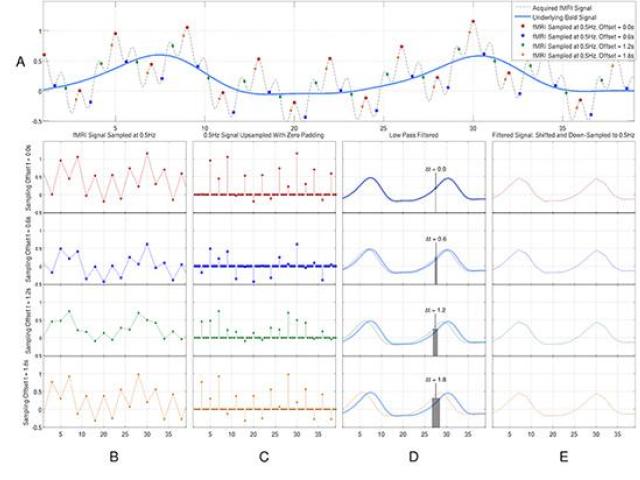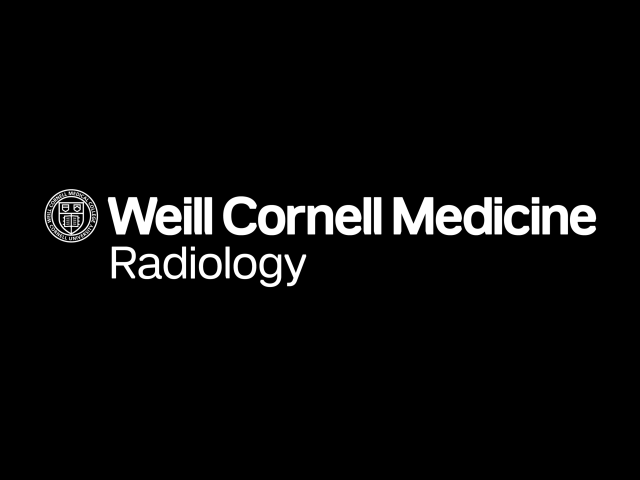fMRI simulator
Award or Grant: National Institutes of Health (NIH)/National Institute on Aging (NIA) 3RF1AG038465A comprehensive functional magnetic resonance imaging (fMRI) simulator not only helps evaluate and improve the present blood oxygenation-level-dependent (BOLD) extraction methods for false-positive detection, but it is also the only available tool for evaluating false-negatives. The fMRI simulator...
Pre-processing of fMRI data
Award or Grant: National Institutes of Health (NIH)/National Institute on Aging (NIA) 5R01AG026158Functional magnetic resonance imaging (fMRI) pre-processing requires urgent attention, particularly given the increasingly complex derivation of functional connectivity-based biomarkers in resting-state fMRI. High scanner and thermal noise, irregular sampling in interleaved slice acquisition,...
Optimal recovery of BOLD signal from interleaved fMRI data
The QNL has developed an optimal technique to extract the blood-oxygen-level-dependent (BOLD) signal from interleaved functional magnetic resonance imaging (fMRI) data. In this project, the lab uses a well-established, simple signal reconstruction method to correct irregular sampling problems in interleaved slice acquisition. The lab has shown the superiority of this optimal method, particularly...
Region-based spatial normalization
In functional neuroimaging studies of cognitive aging, age-related changes in brain morphology make it difficult to co-register brains, which is a key step for studies comparing task-related activation in young and old groups. To demonstrate the problem’s severity, the video below shows 29 participants’ brains after spatial normalization; corresponding regions are shown in the same color, and the...
Multilateral Markov random field and brain subcortical segmentation
Award or Grant: National Institutes of Health/National Institute on Aging (NIH/NIA) 5R01AG055299, NIH/NIA 5R01AG055422, NIH/NIA 5 R01 AG057681Conventional Markov random field (MRF) is hampered by noncausality, and its causal definitions lead to difficulties. For instance, the Markov mesh random field has strong diagonal dependency in its local neighboring system. The Quantitative Neuroimaging...
BHII Clinical Core Operations Co-Director Silky Pahlajani, M.D., talks about Alzheimer’s disease
Dr. Silky Pahlajani discusses Alzheimer's disease: the definition, risk factors, signs and symptoms, diagnostic/confirmation testing, and who can be affected. Learn what is known about prevention, how the condition is currently treated, and what future treatments might become available.
BHII Neuropsychiatrist Silky Pahlajani, M.D., talks about autoimmune disease
Dr. Silky Pahlajani is an Assistant Professor of Behavioral Neurology and Neuropsychiatry in the department of neurology at Weill Cornell. She is also an Assistant Attending at New-York Presbyterian Hospital/Weill Cornell Medical Center. She has training in autoimmune/neuroinflammatory brain disorders including autoimmune encephalitis. Dr. Pahlajani was a speaker for the April 2019 AE Symposium...
CSF clearance with 11C-butanol PET predicts amyloid deposition
Awards or Grants: R56 AG058913, National Institutes of Health/National Institute of Aging (NIH/NIA) (09/15/18-08/31/22)This positron emission tomography (PET) project examines the longitudinal relationship between the clearance of cerebrospinal fluid (CSF) using a novel PET agent [11C]-butanol in association with brain amyloid.
Brain-enriched microRNAs detectable in plasma as biomarkers of Alzheimer's disease
Awards or Grants: 2R44AG044860-04, National Institutes of Health (NIH) (03/01/17-02/28/23)The main objective of this collaborative project is to assess the microRNA-based assay performance for the detection of mild cognitive impairment, Alzheimer's disease (AD), pre-symptomatic AD (cognitively normal, amyloid-positive) and control (cognitively normal, amyloid-negative) using...
MRI progression markers of cognitive decline in the elderly
Awards or Grants: AG012101, National Institutes of Health/National Institute of Aging (NIH/NIA), 09/15/10-05/31/18Testing cerebral blood flow using arterial spin labeling (ASL)-magnetic resonance imaging (MRI) with inhaled carbon dioxide (CO2) as a predictor of cerebrospinal fluid (CSF) amyloid beta and cognitive decline in mild cognitive impairment (MCI).











